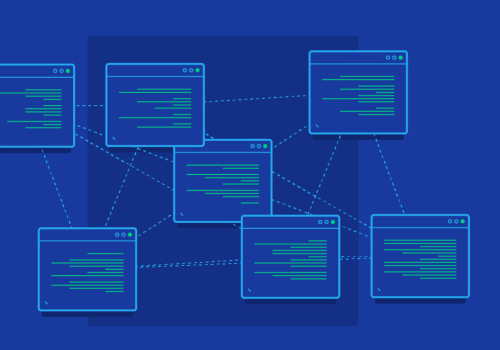Have you ever found yourself stuck in a long line, waiting for your turn? This is an example of a queue, a linked lists data structure that is vital to the functioning of many modern systems. A queue is a fundamental concept in computer science, and it can also be used in conjunction with stacks data structure to manage tasks, prioritize requests, and maintain order in a system. In this article, we will take a comprehensive look at understanding queues and their counterpart, stacks data structure, and how they can be utilized in software development. Queues and stacks are simple yet powerful data structures that are essential to any software engineer’s toolkit. To gain a better understanding of queues, consider taking advantage of profs online coding tutors who can provide further insight into the basics of queues, from their definition and components to the different algorithms and implementations that can be used. We will also examine some of the practical applications of queues, such as task scheduling, resource management, and data processing. By the end of this article, you will have a good understanding of queues and how they can be used to improve the performance and scalability of your software applications. Have you ever found yourself stuck in a long line, waiting for your turn? This is an example of a queue, a linked lists data structure that is vital to the functioning of many modern systems. A queue is a fundamental concept in computer science, and it can also be used in conjunction with stacks data structure to manage tasks, prioritize requests, and maintain order in a system. In this article, we will take a comprehensive look at understanding queues and their counterpart, stacks data structure, and how they can be utilized in software development. Queues and stacks are simple yet powerful data structures that are essential to any software engineer’s toolkit. To gain a better understanding of queues, consider taking advantage of profs online coding tutors who can provide further insight into the basics of queues, from their definition and components to the different algorithms and implementations that can be used. We will also examine some of the practical applications of queues, such as task scheduling, resource management, and data processing. By the end of this article, you will have a good understanding of queues and how they can be used to improve the performance and scalability of your software applications. that is vital to the functioning of many modern systems. A queue is a fundamental concept in computer science, and it can also be used in conjunction with stacks data structure to manage tasks, prioritize requests, and maintain order in a system. In this article, we will take a comprehensive look at understanding queues and their counterpart, stacks data structure, and how they can be utilized in software development. Queues and stacks are simple yet powerful data structures that are essential to any software engineer’s toolkit. To gain a better understanding of queues, consider taking advantage of profs online coding tutors who can provide further insight into the basics of queues, from their definition and components to the different algorithms and implementations that can be used. We will also examine some of the practical applications of queues, such as task scheduling, resource management, and data processing. By the end of this article, you will have a good understanding of queues and how they can be used to improve the performance and scalability of your software applications. Have you ever found yourself stuck in a long line, waiting for your turn? This is an example of a queue, a linked lists data structure that is vital to the functioning of many modern systems. A queue is a fundamental concept in computer science, and it can also be used in conjunction with stacks data structure to manage tasks, prioritize requests, and maintain order in a system. In this article, we will take a comprehensive look at understanding queues and their counterpart, stacks data structure, and how they can be utilized in software development. Queues and stacks are simple yet powerful data structures that are essential to any software engineer’s toolkit. To gain a better understanding of queues, consider taking advantage of profs online coding tutors who can provide further insight into the basics of queues, from their definition and components to the different algorithms and implementations that can be used. We will also examine some of the practical applications of queues, such as task scheduling, resource management, and data processing. By the end of this article, you will have a good understanding of queues and how they can be used to improve the performance and scalability of your software applications. to manage tasks, prioritize requests, and maintain order in a system. In this article, we will take a comprehensive look at understanding queues and their counterpart, stacks data structure, and how they can be utilized in software development. Queues and stacks are simple yet powerful data structures that are essential to any software engineer’s toolkit. To gain a better understanding of queues, consider taking advantage of profs online coding tutors who can provide further insight into the basics of queues, from their definition and components to the different algorithms and implementations that can be used. We will also examine some of the practical applications of queues, such as task scheduling, resource management, and data processing. By the end of this article, you will have a good understanding of queues and how they can be used to improve the performance and scalability of your software applications. Have you ever found yourself stuck in a long line, waiting for your turn? This is an example of a queue, a linked lists data structure that is vital to the functioning of many modern systems. A queue is a fundamental concept in computer science, and it can also be used in conjunction with stacks data structure to manage tasks, prioritize requests, and maintain order in a system. In this article, we will take a comprehensive look at understanding queues and their counterpart, stacks data structure, and how they can be utilized in software development. Queues and stacks are simple yet powerful data structures that are essential to any software engineer’s toolkit. To gain a better understanding of queues, consider taking advantage of profs online coding tutors who can provide further insight into the basics of queues, from their definition and components to the different algorithms and implementations that can be used. We will also examine some of the practical applications of queues, such as task scheduling, resource management, and data processing. By the end of this article, you will have a good understanding of queues and how they can be used to improve the performance and scalability of your software applications. that is vital to the functioning of many modern systems. A queue is a fundamental concept in computer science, and it can also be used in conjunction with stacks data structure to manage tasks, prioritize requests, and maintain order in a system. In this article, we will take a comprehensive look at understanding queues and their counterpart, stacks data structure, and how they can be utilized in software development. Queues and stacks are simple yet powerful data structures that are essential to any software engineer’s toolkit. To gain a better understanding of queues, consider taking advantage of profs online coding tutors who can provide further insight into the basics of queues, from their definition and components to the different algorithms and implementations that can be used. We will also examine some of the practical applications of queues, such as task scheduling, resource management, and data processing. By the end of this article, you will have a good understanding of queues and how they can be used to improve the performance and scalability of your software applications. Have you ever found yourself stuck in a long line, waiting for your turn? This is an example of a queue, a linked lists data structure that is vital to the functioning of many modern systems. A queue is a fundamental concept in computer science, and it can also be used in conjunction with stacks data structure to manage tasks, prioritize requests, and maintain order in a system. In this article, we will take a comprehensive look at understanding queues and their counterpart, stacks data structure, and how they can be utilized in software development. Queues and stacks are simple yet powerful data structures that are essential to any software engineer’s toolkit. To gain a better understanding of queues, consider taking advantage of profs online coding tutors who can provide further insight into the basics of queues, from their definition and components to the different algorithms and implementations that can be used. We will also examine some of the practical applications of queues, such as task scheduling, resource management, and data processing. By the end of this article, you will have a good understanding of queues and how they can be used to improve the performance and scalability of your software applications., and how they can be utilized in software development. Queues and stacks are simple yet powerful data structures that are essential to any software engineer’s toolkit. To gain a better understanding of queues, consider taking advantage of profs online coding tutors who can provide further insight into the basics of queues, from their definition and components to the different algorithms and implementations that can be used. We will also examine some of the practical applications of queues, such as task scheduling, resource management, and data processing. By the end of this article, you will have a good understanding of queues and how they can be used to improve the performance and scalability of your software applications. Have you ever found yourself stuck in a long line, waiting for your turn? This is an example of a queue, a linked lists data structure that is vital to the functioning of many modern systems. A queue is a fundamental concept in computer science, and it can also be used in conjunction with stacks data structure to manage tasks, prioritize requests, and maintain order in a system. In this article, we will take a comprehensive look at understanding queues and their counterpart, stacks data structure, and how they can be utilized in software development. Queues and stacks are simple yet powerful data structures that are essential to any software engineer’s toolkit. To gain a better understanding of queues, consider taking advantage of profs online coding tutors who can provide further insight into the basics of queues, from their definition and components to the different algorithms and implementations that can be used. We will also examine some of the practical applications of queues, such as task scheduling, resource management, and data processing. By the end of this article, you will have a good understanding of queues and how they can be used to improve the performance and scalability of your software applications. that is vital to the functioning of many modern systems. A queue is a fundamental concept in computer science, and it can also be used in conjunction with stacks data structure to manage tasks, prioritize requests, and maintain order in a system. In this article, we will take a comprehensive look at understanding queues and their counterpart, stacks data structure, and how they can be utilized in software development. Queues and stacks are simple yet powerful data structures that are essential to any software engineer’s toolkit. To gain a better understanding of queues, consider taking advantage of profs online coding tutors who can provide further insight into the basics of queues, from their definition and components to the different algorithms and implementations that can be used. We will also examine some of the practical applications of queues, such as task scheduling, resource management, and data processing. By the end of this article, you will have a good understanding of queues and how they can be used to improve the performance and scalability of your software applications. Have you ever found yourself stuck in a long line, waiting for your turn? This is an example of a queue, a linked lists data structure that is vital to the functioning of many modern systems. A queue is a fundamental concept in computer science, and it can also be used in conjunction with stacks data structure to manage tasks, prioritize requests, and maintain order in a system. In this article, we will take a comprehensive look at understanding queues and their counterpart, stacks data structure, and how they can be utilized in software development. Queues and stacks are simple yet powerful data structures that are essential to any software engineer’s toolkit. To gain a better understanding of queues, consider taking advantage of profs online coding tutors who can provide further insight into the basics of queues, from their definition and components to the different algorithms and implementations that can be used. We will also examine some of the practical applications of queues, such as task scheduling, resource management, and data processing. By the end of this article, you will have a good understanding of queues and how they can be used to improve the performance and scalability of your software applications. to manage tasks, prioritize requests, and maintain order in a system. In this article, we will take a comprehensive look at understanding queues and their counterpart, stacks data structure, and how they can be utilized in software development. Queues and stacks are simple yet powerful data structures that are essential to any software engineer’s toolkit. To gain a better understanding of queues, consider taking advantage of profs online coding tutors who can provide further insight into the basics of queues, from their definition and components to the different algorithms and implementations that can be used. We will also examine some of the practical applications of queues, such as task scheduling, resource management, and data processing. By the end of this article, you will have a good understanding of queues and how they can be used to improve the performance and scalability of your software applications. Have you ever found yourself stuck in a long line, waiting for your turn? This is an example of a queue, a linked lists data structure that is vital to the functioning of many modern systems. A queue is a fundamental concept in computer science, and it can also be used in conjunction with stacks data structure to manage tasks, prioritize requests, and maintain order in a system. In this article, we will take a comprehensive look at understanding queues and their counterpart, stacks data structure, and how they can be utilized in software development. Queues and stacks are simple yet powerful data structures that are essential to any software engineer’s toolkit. To gain a better understanding of queues, consider taking advantage of profs online coding tutors who can provide further insight into the basics of queues, from their definition and components to the different algorithms and implementations that can be used. We will also examine some of the practical applications of queues, such as task scheduling, resource management, and data processing. By the end of this article, you will have a good understanding of queues and how they can be used to improve the performance and scalability of your software applications. that is vital to the functioning of many modern systems. A queue is a fundamental concept in computer science, and it can also be used in conjunction with stacks data structure to manage tasks, prioritize requests, and maintain order in a system. In this article, we will take a comprehensive look at understanding queues and their counterpart, stacks data structure, and how they can be utilized in software development. Queues and stacks are simple yet powerful data structures that are essential to any software engineer’s toolkit. To gain a better understanding of queues, consider taking advantage of profs online coding tutors who can provide further insight into the basics of queues, from their definition and components to the different algorithms and implementations that can be used. We will also examine some of the practical applications of queues, such as task scheduling, resource management, and data processing. By the end of this article, you will have a good understanding of queues and how they can be used to improve the performance and scalability of your software applications. Have you ever found yourself stuck in a long line, waiting for your turn? This is an example of a queue, a linked lists data structure that is vital to the functioning of many modern systems. A queue is a fundamental concept in computer science, and it can also be used in conjunction with stacks data structure to manage tasks, prioritize requests, and maintain order in a system. In this article, we will take a comprehensive look at understanding queues and their counterpart, stacks data structure, and how they can be utilized in software development. Queues and stacks are simple yet powerful data structures that are essential to any software engineer’s toolkit. To gain a better understanding of queues, consider taking advantage of profs online coding tutors who can provide further insight into the basics of queues, from their definition and components to the different algorithms and implementations that can be used. We will also examine some of the practical applications of queues, such as task scheduling, resource management, and data processing. By the end of this article, you will have a good understanding of queues and how they can be used to improve the performance and scalability of your software applications.
Types of Queues
Queues are generally divided into two categories: static and dynamic.Static queues have a fixed size, meaning they can only contain a certain number of items. Dynamic queues, on the other hand, can grow or shrink in size as needed. Both static and dynamic queues support two operations: enqueue and dequeue. Enqueue is the process of adding an item to the queue.
Dequeue is the process of removing an item from the queue. In addition to these two main types of queues, there are other variations that have different properties and uses. For example, priority queues allow for items to be inserted in order of priority, so that higher priority items can be accessed first. There are also double-ended queues, which allow for items to be added to or removed from either end of the queue.
It's important to understand the different types of queues and how they can be used in order to make the most effective use of them. For example, if you need a data structure that can quickly add and remove items in a specific order, then a priority queue may be the best option. On the other hand, if you need a data structure that can grow and shrink in size as needed, then a dynamic queue may be more suitable.
Examples of Queue Usage
Queues are a powerful data structure that can be used in many different applications. In programming languages, queues can be used to store and process data in an efficient manner.They can also be used in databases, for message passing, and for other tasks. To better understand how queues are used in programming languages, let's look at some examples. In Java, queues are used to store and process data in an orderly fashion. They are used to create a sequence of items that can be easily processed.
For example, a queue might be used to store a list of tasks that need to be completed by a certain time. In C++, queues are used to create a sequence of items that can be processed more efficiently than with other data structures. For instance, if we want to process a large number of items quickly, we can use queues to store and process them quickly. Queues can also be used in databases.
For example, if we need to store a large number of records or objects, we can use queues to store them in an orderly fashion. This allows us to access the data more quickly and efficiently. Finally, queues can be used for message passing. This is useful when we need to send messages between different parts of an application or between different computers on a network.
By using queues, we can ensure that messages are sent in the correct order and that they arrive at the intended destination in a timely manner.
In conclusion
, queues are an important data structure that can be used in many different ways. They can be used for storing and processing data in an efficient manner, for storing data in databases, for message passing, and for other tasks. Understanding how queues work and how they can be used will help you become a better programmer. , queues are an important data structure that can be used in many different ways. They can be used for storing and processing data in an efficient manner, for storing data in databases, for message passing, and for other tasks. Understanding how queues work and how they can be used will help you become a better programmer.In conclusion, queues are an incredibly useful data structure that can be used in a variety of ways. Understanding the fundamentals of queues and the two types—static and dynamic—as well as their two operations—enqueue and dequeue—is key to using them effectively. With this knowledge, we can use queues in different programming languages, databases, and message passing applications. By understanding queues, you can improve the efficiency of your own applications.











